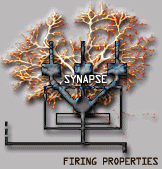 OPERATING SYSTEMS AND ROBOTS
OPERATING SYSTEMS AND ROBOTS  OPERATING SYSTEMS AND ROBOTS
OPERATING SYSTEMS AND ROBOTS We might program the robot to recoil from the danger of heat. It is easy to sense an increase in temperature and transduce it, for instance, to a silicon neural net with proper alarms. But how could the circuit be able to further transduce the pure information in emerging "real knowledge" and "real feelings" of uncomforting danger?
If such a personal human-like operating system were provided, the robot could be said to be conscious. The idea of a modern computer-like operating system of the brain is attributed to Philip Johnson-Laird suggestion. Its actions correspond to Ned Block's A-consciousness, that is, access consciousness.
Suppose a keyboard, a mouse and a monitor. How could a computer work for us? With a fundamental program called operating system. It accepts inputs from the keyboard and the mouse and compares them with commands that its own design allows it to execute. If the command is executable, the situation is reflected at the output, i.e. the monitor. Now the operating system waits for a new command. In the other case, it gives error signals and the input cannot be obeyed. Moreover, there are special memories, peripherals and machinery centered around the computer's von Neumann's bottleneck. All those resources are managed by the operating system.
By analogy, 1) the physiological senses are the keyboard and the mouse, 2) the muscles and speech are the monitor and 3) the von Neumanns bottleneck is the mature, learned brain activity -with the great difference of the parallel processing steps prior to the bottleneck: the emergent human situation is that this operating system involves both conscious and unconscious processes.
The consequences of the operating system manipulations are "conscious" if they involve the von Neumann´s-like serial computer bottleneck processes, and "almost unconscious" or "unconscious proper" if they apply to the parallel computations contributed by the different human neural subnets belonging to the parliament or the society. The whole is like a self-organized neural network, not a classical program to obey (nevertheless, it could be a program simulating the neural network architecture). Any deficit in a particular subnet does not stop the network (neuroelectrical and neurochemical) emergent action, which Johnson-Laird identifies with consciousness (strictly, with A-consciousness). The emergence of this whole system is consciousness, the product is the fun or the awareness or the depression, or any of the psychological moods studied by psychologists.
NEXT
OTHER
2.feb.1999
Pulsar tecla de vuelta
Glosario de Carlos von der Becke, where some specialized words are explained.